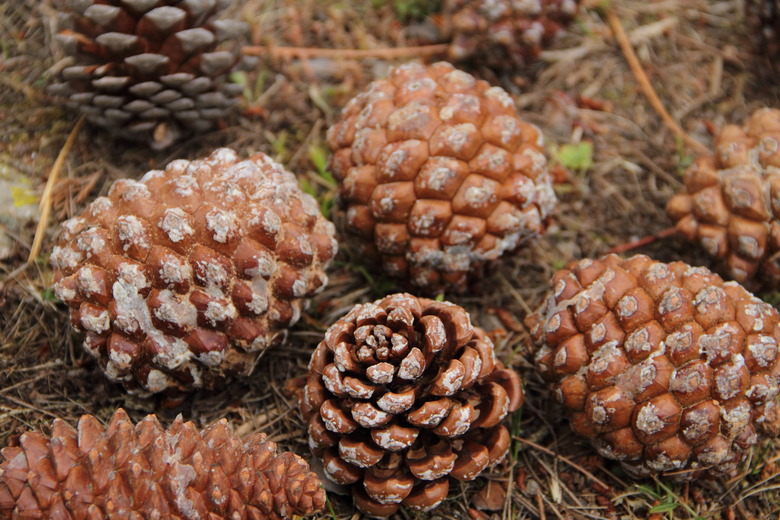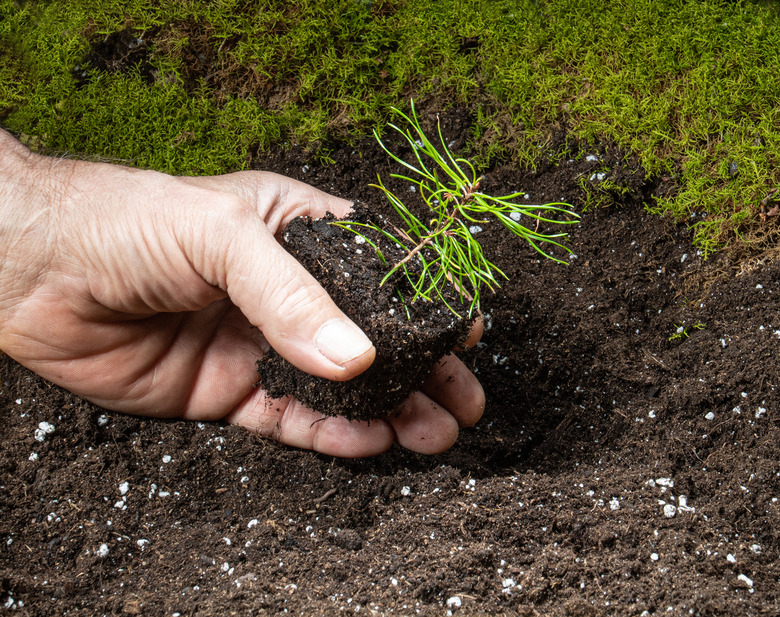How To Grow Pine Trees From A Cone Seed
Pine tree seeds form inside the segmented cones produced by all members of the pine tree family, Pinus. Planting them is the primary way to propagate new pine trees.
Pine trees (Pinus spp.) are among the most common types of trees across the United States. Most will grow well within USDA plant hardiness zones 4 to 9, according to the University of Florida IFAS Extension, although hardiness varies between species.
All pine tree species grow best from seeds, including commonly grown types such as the white pine (Pinus strobus) and ponderosa pine (Pinus ponderosa), both of which grow in USDA zones 3 through 8. The process of gathering seeds from cones and sowing them is fairly straightforward, but it requires patience because pine seeds need a chilling period before they will sprout.
Gathering Pine Tree Seeds
Timing matters when you gather pinecone seeds. The seeds must be fully ripened, but it's important not to wait too long to gather seeds because pine cones open up and drop their seed when very ripe.
- Pine cones are ripe when they change from yellowish-green to a russet brown color, which happens in autumn.
- Gather a few pine cones that are solid brown in color but have tightly closed scales.
- Put the closed pine cones in a large paper bag and set the bag in a dry, warm and airy location for a few days. The scales will open as the pine cone dries out.
- Shake the bag every few days to knock loose the pine cone seeds. Gather the pine cone seeds from the bottom of the bag and throw away any showing obvious signs of damage.
Tip
Gather pine cones from beneath mature pine trees that are spaced far apart, because older, dominant pines produce cones with the most seeds or nuts.
Processing Pine Tree Seeds
Not all pine species need a period of cold stratification to germinate, but most do. So when in doubt, chill the seeds. The process is very simple, and it will increase germination rates for most commonly grown pine species, such as the white pine and Ponderosa pine.
- First, soak the pine seeds overnight in a bowl of water to test for viability. Healthy, viable seeds will sink, and dead seeds will float; keep only the healthy seeds and throw away the dead ones.
- Put the healthy seeds in a plastic storage bag and place the bag inside the refrigerator for three months to mimic the winter chilling cycle the seeds experience in nature.
Tip
Pine seeds have a very tough hull, but soaking them in water and freezing them will help soften them. However, don't try to crack the hull because it can harm the seed inside.
Starting Pine Tree Seeds
After the chilling period, it's time to sow the pine cone seeds in a container and help them sprout. Use a 4-inch plastic container with a drainage hole at the base. A potting mix made of equal parts potting soil, coarse sand, finely shredded pine bark and coir will help provide the right structure, acidity and moisture retention.
1. Sow one pine seed in each pot. Poke a 1/4-inch-deep planting hole and set the pine seed horizontally in the hole. Cover it with soil. 2. Set the pot on a bright, sunny windowsill indoors or outdoors in a cold frame or greenhouse. Pine tree seeds germinate best when daytime temperatures are around 80°F during the day and **68°F at night,** so consider using a propagation mat to warm the soil in cold conditions. 3. Keep the soil moist but not too wet, because extremes in soil moisture or soil dryness can harm the seed. Water only when the soil feels nearly dry on the surface.
Pine tree seeds can take several months to germinate, but most healthy, viable seeds will eventually sprout under the right conditions. After the seeds sprout, place a small oscillating fan nearby to keep air circulating around the seedlings, which will help keep them strong and healthy as they grow.
Pine seedlings should grow in their pots in a bright, sheltered location until they reach a height of 6 to 8 inches and have plenty of mature needles. After that, they can be transplanted into a growing site suited to their species.
Warning
Pine seedlings are very susceptible to fungal problems such as damping-off, so avoid splashing water onto the seedling when watering the soil.

